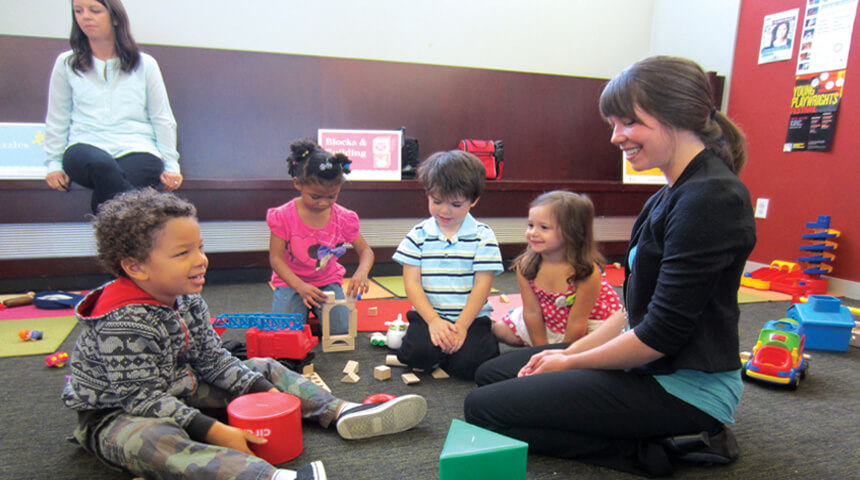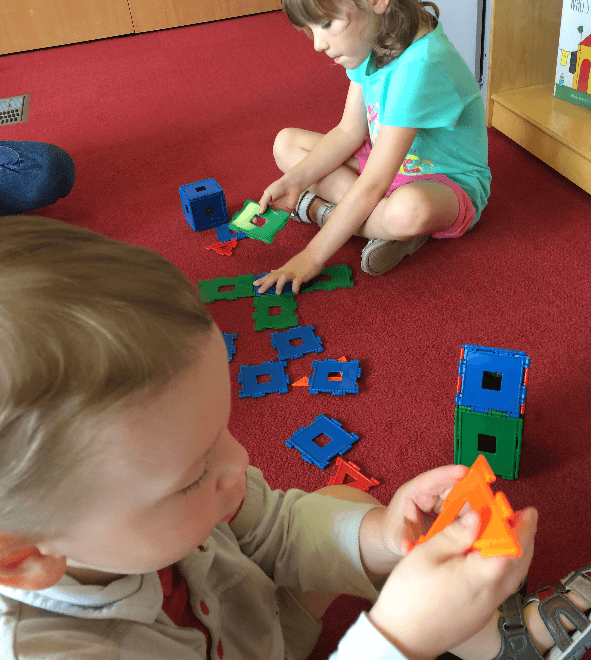Children explore and learn about their world through play. More and more, there is a push towards more “structured” activities in and out of school, while less time is designated for free play. A day without play, is like a sky without sun, and kids and grown-ups alike could benefit from a little more sunshine in their lives.
Along with the other early learning activities–singing, writing, reading and talking, playing helps children build early literacy skills (vocabulary, phonological awareness, print awareness, print motivation, letter knowledge and narrative skills) and is the foundation for school readiness.
Play also encourages children to use their critical thinking and problem solving skills. Building with blocks and sorting toys by size or color are playful ways to increase spatial reasoning and basic mathematical concepts. Play boosts language and social skills, as well as self-confidence and creativity. When children dress-up or role act with others, they are learning how to communicate with peers while expressing themselves in imaginative ways.

When you visit a Carnegie Library of Pittsburgh location you may notice that the Children’s section has a variety of open-ended toys, puzzles and games. We believe that play and literacy go hand-in-hand. Toys, like books, are objects that inspire the imagination and provide endless opportunities to learn about the world.
In the book, Let Them Play: An Early Learning (Un)Curriculum, authors Jeff A. Johnson and Denita Dinger, highlight the importance of play in everyday life:
“Play is not frivolous. It is not a luxury. It is not something to fit in after completing all the important stuff. Play is the important stuff. Play is a drive, a need, a brain-building must-do. It hardwires us as much as it centers us. It feeds our intellect as much as our imagination. It builds knowledge as much as empathy. It connects neurons, and it connects ideas” (Johnson and Dinger 1).
At CLP – Squirrel Hill, we use baby friendly toys during our weekly program Storytime: Baby & Me, including brightly colored stacking cups, soft blocks, shakers and sensory tubes.
We also incorporate play into our Monday evening program, Storytime: Family Fun. Using a Playscape kit (a theme-based kit filled with open-ended toys), children’s librarians encourage children and their parents and caregivers, to stay and play after storytime. This is an opportunity for children to engage in free play while providing a space for parents and caregivers to connect with one another.

Check out the article, Why Toys Should Be in Every Children’s Department, from School Library Journal for more information about play and using toys in the library.
Jessica is a Children’s Specialist at CLP – Squirrel Hill. An avid reader of all things Moomin, Jessica also enjoys beekeeping, biking and digging in the dirt.
